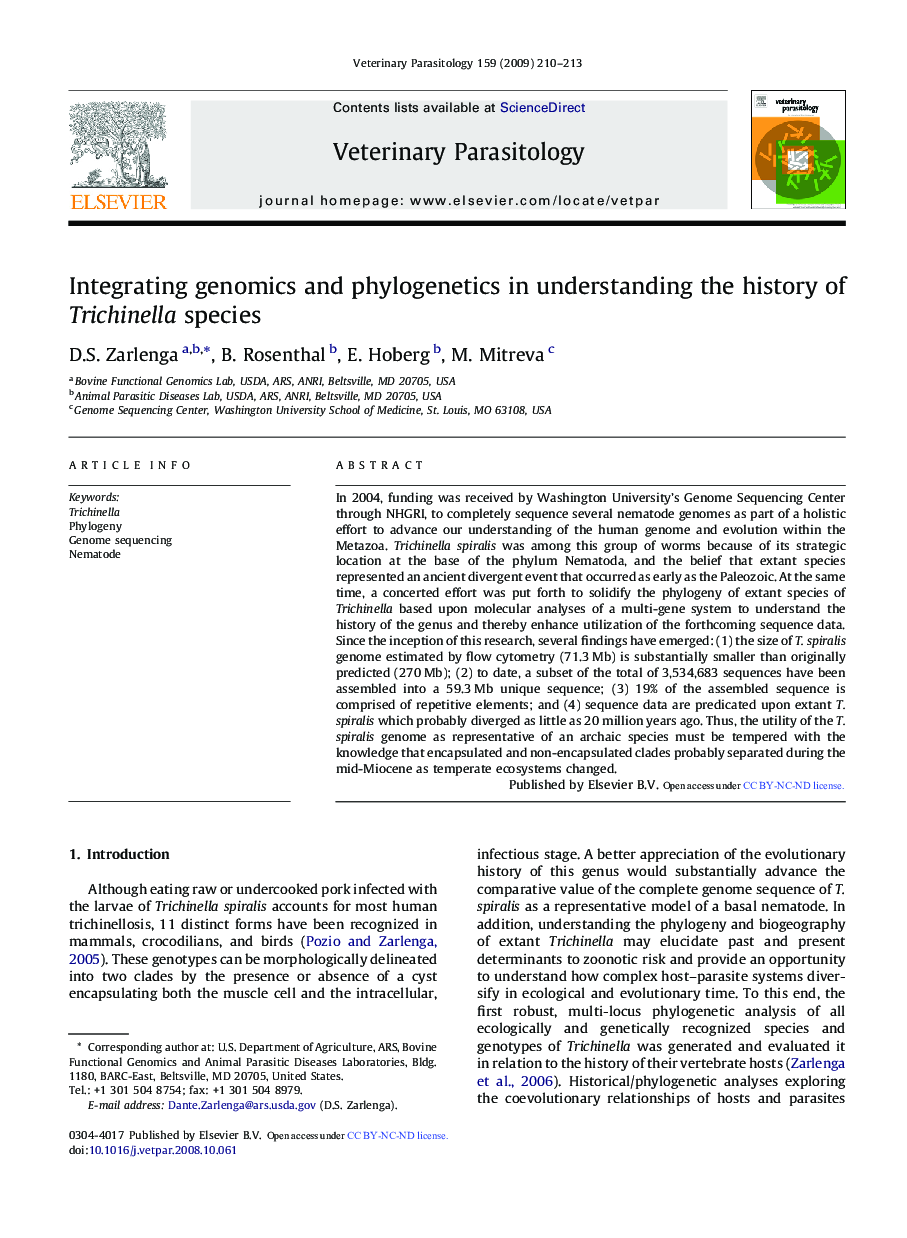| Article ID | Journal | Published Year | Pages | File Type |
|---|---|---|---|---|
| 5806318 | Veterinary Parasitology | 2009 | 4 Pages |
In 2004, funding was received by Washington University's Genome Sequencing Center through NHGRI, to completely sequence several nematode genomes as part of a holistic effort to advance our understanding of the human genome and evolution within the Metazoa. Trichinella spiralis was among this group of worms because of its strategic location at the base of the phylum Nematoda, and the belief that extant species represented an ancient divergent event that occurred as early as the Paleozoic. At the same time, a concerted effort was put forth to solidify the phylogeny of extant species of Trichinella based upon molecular analyses of a multi-gene system to understand the history of the genus and thereby enhance utilization of the forthcoming sequence data. Since the inception of this research, several findings have emerged: (1) the size of T. spiralis genome estimated by flow cytometry (71.3Â Mb) is substantially smaller than originally predicted (270Â Mb); (2) to date, a subset of the total of 3,534,683 sequences have been assembled into a 59.3Â Mb unique sequence; (3) 19% of the assembled sequence is comprised of repetitive elements; and (4) sequence data are predicated upon extant T. spiralis which probably diverged as little as 20 million years ago. Thus, the utility of the T. spiralis genome as representative of an archaic species must be tempered with the knowledge that encapsulated and non-encapsulated clades probably separated during the mid-Miocene as temperate ecosystems changed.
